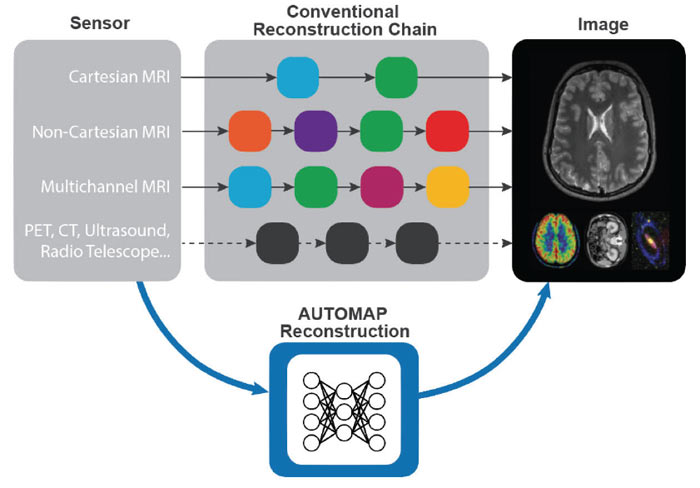Nvidia has claimed that thanks to the use of its GPUs and deep learning technology, we are on the cusp of "a new age of intelligent medical instruments". In a new blog post the graphics chip maker details how the Xray, CT, 3D ultrasound, and MRI scans of old can be transformed into volumetrically rendered or even cinematic renderings of your innards. These visualisations aren't just impressive they can more quickly highlight problems and thus save lives.

Automap deep learning framework for image reconstruction
Volta GPUs are behind these impressive advances, says Nvidia. The performance and efficiency of these processors enables scientists to "apply deep learning to the imaging challenge", we are told. One particular partnership with GE Healthcare, leveraging Nvidia GPUs in the firm's new Revolution Frontier CT, provides the signal processing power for improved image quality with lower X-Ray dosages (up to 80 per cent lower). Various algorithms run on the GPUs can be used for image reconstruction, and medical detection, classification and segmentation.

Volumetric 3D
A more advanced application facilitates volumetric 3D rendering of the inside of a patient. This technique leverages CT and MRI data which are 3D post-processed to visualize complex anatomical information. Nvidia says that thanks to this technology doctors can manipulate and view images from different perspectives to get a good spatial understanding of the anatomy.

Cinematic rendering
Last but not least Nvidia discussed a futuristic looking approach to medical imaging called Cinematic Rendering. What inputs are used for this visualisation technique aren't detailed but they are likely similar to those used by volumetric 3D rendering above. With the raw scans plus global illumination techniques (popular in computer animation) photorealistic images can be generated. Nvidia is proud to work in the medical sciences where its GPUs can be harnessed to help combat disease and save lives.
In a related announcement yesterday, Nvidia blogged about its collaboration with GE Healthcare and Nuance. Working together the firms have leveraged Nvidia's deep learning platform to bring AI to medical imaging in the GE Revolution Frontier CT. This CT scanner is twice as fast as its predecessor and Nuance's image-sharing and reporting software speeds along radiologist workflows - improving the efficiency of disease detection, diagnosis and treatment.






